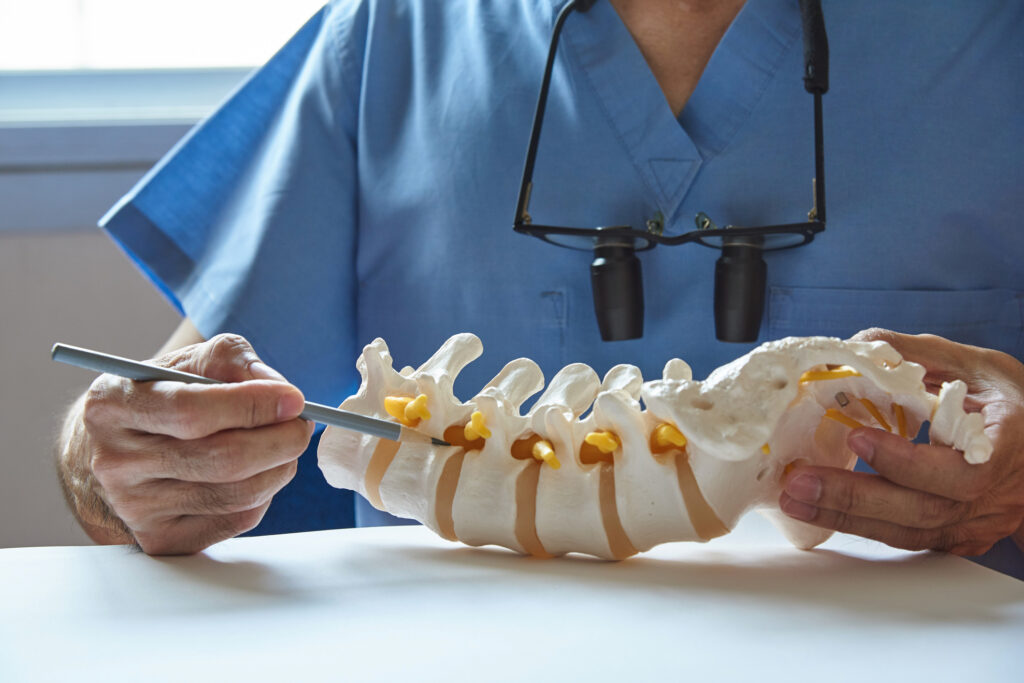Lumbar spinal stenosis refers to a condition in which the spaces within the lower spine become narrowed. This narrowing can put pressure on the nerves traveling through the lower back into the legs. Individuals with back pain may benefit from understanding how this condition develops, the symptoms that may arise, and how it typically progresses. Reviewing the common causes and available treatment options can help back pain sufferers discuss the condition more knowledgeably with their healthcare providers.
What Is Lumbar Spinal Stenosis?
Lumbar spinal stenosis describes the narrowing of the spinal canal or other spaces in the lower spine. This process most commonly impacts the lumbar vertebrae, which are the bones in the lower part of the back. When the canal becomes constricted, nerves may be compressed. The result may be a range of symptoms affecting the back, buttocks, and legs.
What Causes It?
The narrowing seen in this condition is often associated with age-related changes in the spine. Degenerative arthritis of the spine, known as spondylosis, is a frequent contributing factor. Additional causes include thickened ligaments, herniated discs, or bone spurs that encroach upon the spinal canal. Some individuals may also be born with a naturally narrow spinal canal, which can increase their likelihood of developing stenosis as they age.
What Are the Symptoms?
This condition can lead to a recognizable set of symptoms. Common symptoms include:
- Low back pain that may travel into the buttocks or legs
- Numbness, tingling, or weakness in the lower extremities
Symptoms have the potential to worsen with activities such as walking or standing and may improve when sitting or leaning forward. While some people experience only minor discomfort, others may report significant limitations in movement due to pain or additional changes.
How Does It Develop and Progress?
The development of this condition is typically gradual. Degenerative changes within the spinal structures accumulate over time, resulting in increased narrowing of the nerve pathways. Early phases may involve mild discomfort that comes and goes. Nerve compression can become more constant over time, leading to persistent pain, numbness, or difficulty walking.
The rate at which the condition progresses varies. Some individuals notice a gradual worsening of symptoms, while others remain stable for extended periods. Factors influencing progression can include activity level, overall spine health, and genetic predisposition to degenerative changes. Acute worsening can occur if a new injury or disc herniation adds to existing spinal narrowing.
What Are the Available Treatment Options?
Several approaches are used to manage this condition, tailored to symptom severity and patient needs. Common nonsurgical strategies include:
- Anti-inflammatory medications: Used to reduce inflammation and manage pain episodes.
- Physical therapy: Focuses on strengthening core muscles, improving flexibility, and teaching proper body mechanics to reduce spinal pressure.
- Epidural injections: Delivery of corticosteroid medication into the epidural space can provide temporary relief by reducing inflammation around the compressed nerves.
Minimally invasive lumbar decompression (MILD) is a procedure designed to increase the width of the spinal canal with smaller incisions. This approach aims to relieve nerve compression with shorter recovery times compared to traditional surgical techniques. Suitability for MILD and other surgical options is determined by the individual’s symptoms, overall health, and response to non-surgical treatments.
Learn More About Lumbar Spinal Stenosis Today
Understanding the development and progression of lumbar spinal stenosis can help back pain sufferers make informed choices about their care. Recognizing the most common causes, symptoms, and available management options supports proactive discussions with healthcare professionals. For those seeking additional information about the condition and guidance on managing back pain, consulting a specialist in spinal health is recommended.

Leave a Reply